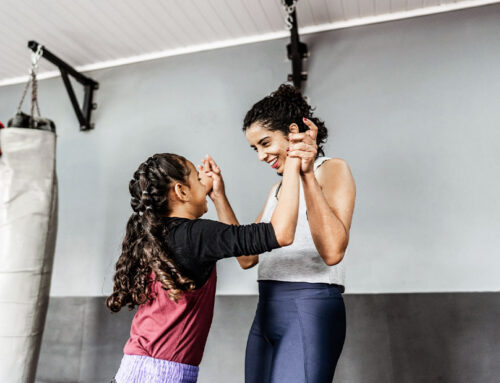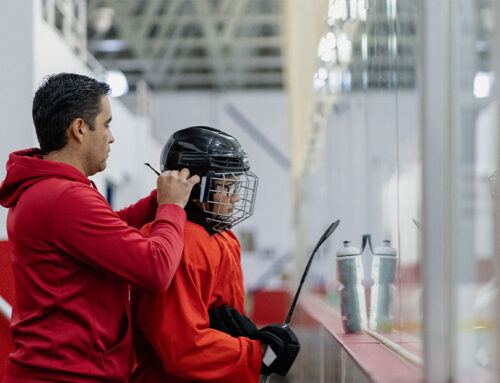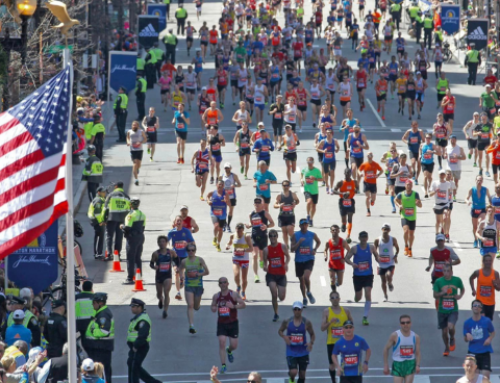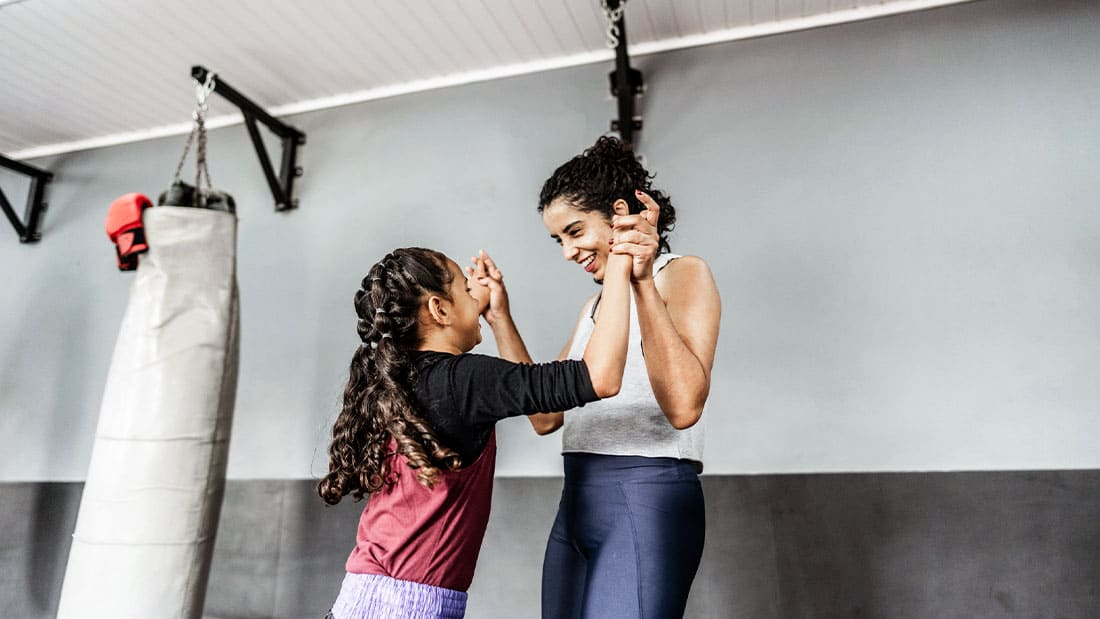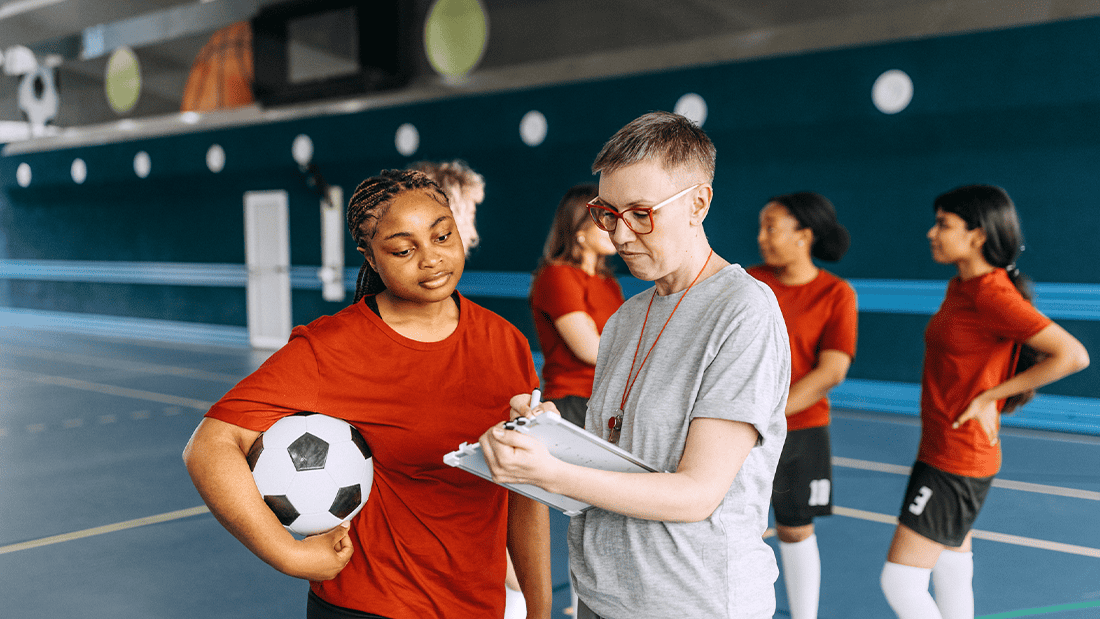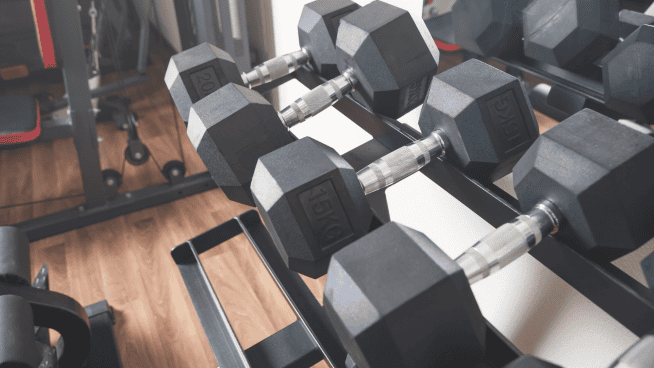At-Home Sport Specific Training Made Simple
Training at home, or with minimal equipment, can be frustrating for athletes and coaches. Creativity has its limits, and without fancy machines, a turf field, and access to your own strength coach, training for a specific sport may seem impossible. This quick guide can teach you to create sport-specific workouts, for any sport, by manipulating a few key variables in your workout.
The Plane of Movement
If you take a moment and analyze the sport and position that the athlete plays, you can determine what planes or directions of movement are needed for success. A sprinter is mostly in the sagittal, or front and back, plane, while a tennis player makes huge lateral jumps in the coronal, or side to side, plane. A football or basketball player does both while having to make some physical contact with another body. Matching the exercise with the sporting movement’s direction can help make a training session more sport-specific. Here are a few examples.
A split lunge jump may be more specific to a sprinter running in a straight line, but a lateral plyometric speed skater will be more particular to the tennis player moving side to side on the court. A wide stance jump squat will work great for a football lineman as it can mimic explosively driving forward off the line to block a linebacker. Power skips are an excellent exercise for a basketball player as it mimics a fast break into a powerful drive and layup. Almost all athletes need to move in 3 dimensions, but try choosing one exercise for each training session to mimic one of the main planes of movement of that sport to develop the strength needed for success.
Speed of Movement
The speed of an exercise determines the rate at which force is produced. There are some instances in sports when force is applied slowly, methodically, and gradually. At the same time, there are others where it is applied as fast and explosively as possible. Take rowing crew, for example. The rowing must be done in unison and timed properly with everyone else in the boat. If one team member is explosively rowing as hard and fast as possible, he will throw off the entire team. Here is an example of how to manipulate the movement’s speed to mimic that of the sport more closely.
Take a football wide receiver as an example. Do they always explode off the line as hard and fast as possible? No, specific routes require some slow, methodical movement before they take off as explosively as possible to catch a pass and then score. You can set up a short burst, sport-specific drill for at-home training to prepare for this task. Perform three reps of a squat for the initial jump off the line, five pushups for that push off and blocking off the defender, four split jump lunges for a juke move, then sprint 20 yards to run the route and score.
This drill would not make much sense for our crew member from the initial example. For this athlete, rowing exercises like dumbbell rows, inverted rows, or pullups to strengthen the back will be better choices. Performed with control, this will be an excellent way to train for their force development speed in a specific way. Don’t have a dumbbell or pullup bar at home? Take a beach towel and stand in the middle of it with one foot. Grab the ends of the towel in the hands and bend over at the waist. From here, you can do isometric towel rows to train the back at home.
Duration of Movement & Conditioning
Now that you have trained the movement and the sport’s speed, you have to match the duration of the movement. Our body has a few different ways to use stored energy. These are called energy systems, and the way that we exercise determines which energy system is used. The more we use one, the better adapted it becomes to the given task. Our exercise (or sport) intensity and duration are the two primary reasons we use one energy system predominately over another.
This parallel is drawn between a sprinter and a long-distance runner. Their sporting event is similar in terms of movement, but the difference is between explosive power and endurance. Because of this, their training is different, and their bodies respond differently.
Most team sports have periods of explosive power sprinkled in with longer aerobic output or total rest periods. For example, baseball is a sport where explosive amounts of power are exhibited, followed by sometimes very prolonged rest. Football is similar in that the average play lasts only 4 seconds, followed by a more active rest to jog back to the huddle or sideline. Soccer players cover an enormous amount of ground during an average game, but much of the time moving is actually spent walking or in a light jog. Matching the conditioning and duration of exercises will better prepare the athlete to play their sport at a high level. Here are a few specific examples of ways to strengthen exercise duration, particularly to the game and conditioning workouts energy system-specific.
Sprinter
Let’s say you are training a sprinter who does the 100m. A really competitive time for this would be between 12-15 seconds. If you want each sprint to be a true maximum effort, you must rest long enough between bouts to produce the same high effort for each set. Try this Split Jump Lunge workout as the power portion of a full workout. Perform eight sets of 15 seconds max effort split lunge jumps followed by 90 seconds of rest between each set. You will explode powerfully in a similar plane to the sprint and then recover enough to make the next bout of exercise as powerful as the last.
Tennis
In contrast, a tennis match is a highly variable sporting event. Entire tennis matches can take a while, depending on if it is a best of 3 or 5 series. Playing the actual sport and doing some aerobic conditioning will help the athlete train for the endurance required to play a full tournament. Each play, however, is what can be trained for in the gym. Each play’s time can also be variable, so here is a unique way to train for that variance in energy system demands. Here is a Lateral Plyometric Speed Skater ladder workout for the tennis player. Do one set each of 15 seconds max effort lateral plyometric speed skaters, then 30 seconds max effort, 45 seconds max effort, and finally 60 seconds max effort. Rest after each work set the same amount of time that you just worked for. For example, after the 45-second bout, you rest 45 seconds. After the 60 seconds of work, you rest 60 seconds. Repeat two times.
A conditioning workout should follow some strength work or be performed on a separate day. If you are working with a football team with several different positions, they should not all be conditioning the same. A lineman workout should be different than a safety’s workout. A lineman may do 10-yard sprints followed by a 45-second rest and the safety will do a 40-yard sprint with a 45-second rest. Soccer players need to move constantly for a long time with short bursts of speed and power built throughout. A good conditioning workout for the soccer player could be a tempo run. Try programming in a 30-minute run where powerful, exhaustive efforts follow alternating bouts of consistent, easy effort. Here is an example. Run 4 minutes at a 10-minute mile pace followed by 1 minute at a 6-minute mile pace. Repeat this six times for a total of 30 minutes. This is a general prescription, and individual speeds will vary.
It should be noted that the best sport-specific training that any athlete can do is practicing and playing their sport. While strength and conditioning is an important way to further prepare the athlete for the demand of their sport; specifically, it is also meant to develop the athlete in a general manner. It is also important to train the movements that are not in their sport to help reduce the risk of common overuse injuries. Even for youth athletes, establishing a training season is important and worthwhile to develop sport-specific strength and conditioning.
Read More
RECOMMENDED FOR YOU
MOST POPULAR
At-Home Sport Specific Training Made Simple
Training at home, or with minimal equipment, can be frustrating for athletes and coaches. Creativity has its limits, and without fancy machines, a turf field, and access to your own strength coach, training for a specific sport may seem impossible. This quick guide can teach you to create sport-specific workouts, for any sport, by manipulating a few key variables in your workout.
The Plane of Movement
If you take a moment and analyze the sport and position that the athlete plays, you can determine what planes or directions of movement are needed for success. A sprinter is mostly in the sagittal, or front and back, plane, while a tennis player makes huge lateral jumps in the coronal, or side to side, plane. A football or basketball player does both while having to make some physical contact with another body. Matching the exercise with the sporting movement’s direction can help make a training session more sport-specific. Here are a few examples.
A split lunge jump may be more specific to a sprinter running in a straight line, but a lateral plyometric speed skater will be more particular to the tennis player moving side to side on the court. A wide stance jump squat will work great for a football lineman as it can mimic explosively driving forward off the line to block a linebacker. Power skips are an excellent exercise for a basketball player as it mimics a fast break into a powerful drive and layup. Almost all athletes need to move in 3 dimensions, but try choosing one exercise for each training session to mimic one of the main planes of movement of that sport to develop the strength needed for success.
Speed of Movement
The speed of an exercise determines the rate at which force is produced. There are some instances in sports when force is applied slowly, methodically, and gradually. At the same time, there are others where it is applied as fast and explosively as possible. Take rowing crew, for example. The rowing must be done in unison and timed properly with everyone else in the boat. If one team member is explosively rowing as hard and fast as possible, he will throw off the entire team. Here is an example of how to manipulate the movement’s speed to mimic that of the sport more closely.
Take a football wide receiver as an example. Do they always explode off the line as hard and fast as possible? No, specific routes require some slow, methodical movement before they take off as explosively as possible to catch a pass and then score. You can set up a short burst, sport-specific drill for at-home training to prepare for this task. Perform three reps of a squat for the initial jump off the line, five pushups for that push off and blocking off the defender, four split jump lunges for a juke move, then sprint 20 yards to run the route and score.
This drill would not make much sense for our crew member from the initial example. For this athlete, rowing exercises like dumbbell rows, inverted rows, or pullups to strengthen the back will be better choices. Performed with control, this will be an excellent way to train for their force development speed in a specific way. Don’t have a dumbbell or pullup bar at home? Take a beach towel and stand in the middle of it with one foot. Grab the ends of the towel in the hands and bend over at the waist. From here, you can do isometric towel rows to train the back at home.
Duration of Movement & Conditioning
Now that you have trained the movement and the sport’s speed, you have to match the duration of the movement. Our body has a few different ways to use stored energy. These are called energy systems, and the way that we exercise determines which energy system is used. The more we use one, the better adapted it becomes to the given task. Our exercise (or sport) intensity and duration are the two primary reasons we use one energy system predominately over another.
This parallel is drawn between a sprinter and a long-distance runner. Their sporting event is similar in terms of movement, but the difference is between explosive power and endurance. Because of this, their training is different, and their bodies respond differently.
Most team sports have periods of explosive power sprinkled in with longer aerobic output or total rest periods. For example, baseball is a sport where explosive amounts of power are exhibited, followed by sometimes very prolonged rest. Football is similar in that the average play lasts only 4 seconds, followed by a more active rest to jog back to the huddle or sideline. Soccer players cover an enormous amount of ground during an average game, but much of the time moving is actually spent walking or in a light jog. Matching the conditioning and duration of exercises will better prepare the athlete to play their sport at a high level. Here are a few specific examples of ways to strengthen exercise duration, particularly to the game and conditioning workouts energy system-specific.
Sprinter
Let’s say you are training a sprinter who does the 100m. A really competitive time for this would be between 12-15 seconds. If you want each sprint to be a true maximum effort, you must rest long enough between bouts to produce the same high effort for each set. Try this Split Jump Lunge workout as the power portion of a full workout. Perform eight sets of 15 seconds max effort split lunge jumps followed by 90 seconds of rest between each set. You will explode powerfully in a similar plane to the sprint and then recover enough to make the next bout of exercise as powerful as the last.
Tennis
In contrast, a tennis match is a highly variable sporting event. Entire tennis matches can take a while, depending on if it is a best of 3 or 5 series. Playing the actual sport and doing some aerobic conditioning will help the athlete train for the endurance required to play a full tournament. Each play, however, is what can be trained for in the gym. Each play’s time can also be variable, so here is a unique way to train for that variance in energy system demands. Here is a Lateral Plyometric Speed Skater ladder workout for the tennis player. Do one set each of 15 seconds max effort lateral plyometric speed skaters, then 30 seconds max effort, 45 seconds max effort, and finally 60 seconds max effort. Rest after each work set the same amount of time that you just worked for. For example, after the 45-second bout, you rest 45 seconds. After the 60 seconds of work, you rest 60 seconds. Repeat two times.
A conditioning workout should follow some strength work or be performed on a separate day. If you are working with a football team with several different positions, they should not all be conditioning the same. A lineman workout should be different than a safety’s workout. A lineman may do 10-yard sprints followed by a 45-second rest and the safety will do a 40-yard sprint with a 45-second rest. Soccer players need to move constantly for a long time with short bursts of speed and power built throughout. A good conditioning workout for the soccer player could be a tempo run. Try programming in a 30-minute run where powerful, exhaustive efforts follow alternating bouts of consistent, easy effort. Here is an example. Run 4 minutes at a 10-minute mile pace followed by 1 minute at a 6-minute mile pace. Repeat this six times for a total of 30 minutes. This is a general prescription, and individual speeds will vary.
It should be noted that the best sport-specific training that any athlete can do is practicing and playing their sport. While strength and conditioning is an important way to further prepare the athlete for the demand of their sport; specifically, it is also meant to develop the athlete in a general manner. It is also important to train the movements that are not in their sport to help reduce the risk of common overuse injuries. Even for youth athletes, establishing a training season is important and worthwhile to develop sport-specific strength and conditioning.
Read More

